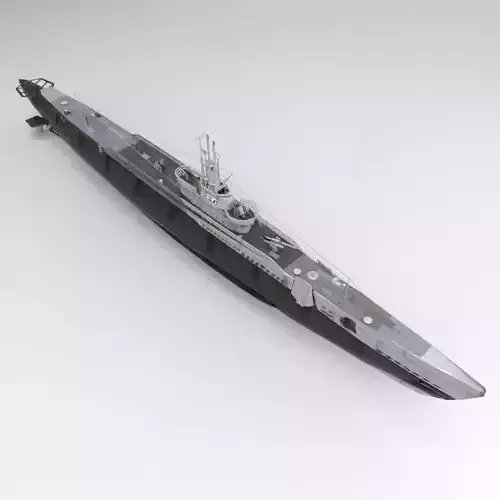1/20
The United States Navy Gato class submarine formed the core of the submarine service that was largely responsible for the destruction of the Japanese merchant marine and a large portion of the Imperial Japanese Navy in World War II. Named after the first vessel of this design, USS Gato (SS-212), the Gato class and its successors, the Balao and Tench classes, formed the majority of the United States Navy's WWII submarine fleet. Gato's name comes from a species of small cat shark. Like most other U.S. Navy submarines of the period, the Gato class were given the names of marine creatures.
The Gato-class boats were considered to be Fleet Submarines. The original rationale behind their design was that they were intended to operate as adjuncts to the main battle fleet. They were to scout out ahead of the fleet and report on the enemy fleet's composition, speed, and course, then they were to attack and whittle down the enemy in preparation for the main fleet action, a titanic gun battle between cruisers and battleships. This was an operational concept borne out of experience from World War I. In order to operate effectively in this role, a submarine had to have high surface speed, long range and endurance, and a heavy armament. Unfortunately, the state-of-the-art in submarine design and construction in the 1920s and 1930s made this combination of qualities very difficult to achieve. The USN constantly experimented with this concept in the post-World War I years, producing a series of submarines with less than stellar qualities and reliability, the T class and the so-called V boats.
Once they began to arrive in theater in large numbers in mid-to-late 1942, the Gatos were in the thick of the fight against the Japanese. Many of these boats racked up impressive war records. Flasher, Rasher and Barb were the top three scoring boats in terms of tonnage sunk by US submarines. Silversides, Flasher, and Wahoo were 3rd, 4th, and 7th place on the list for the number of ships sunk. Gato-class boats sank three Japanese submarines: I-29, I-168 and I-351; while only losing one in exchange, USS Corvina to I-176.
Product features (3ds and obj)* Main USS Trigger submarine
* Diving planes and rudder are separate groups for easier animation.
* Propellers are separate groups for easier animation.
* Torpedo tubes are separate groups for easier animation.
* Deck guns are separate groups for easier animation.
* Periscopes are separate groups for easier animation.
Product Features (Poser):
- Includes three Poser figures: obj, cr2/ png
- USS Trigger
- Mk14 Steam Torpedo
- Mk18 Electric Torpedo
1) The Anchors on this figure can be made invisible by changing them to invisible in your parameters tab after selecting them from the skeleton list in your scene tree.
2) Some locations have only one joint edited, unused joints/parameters have been hidden and are un-needed, and other locations have had limits applied to represent the mechanical nature of the ship, In your Scene Tree, look for the parameters marked Elevate, Train, Swing, Spin, and Swivel to pose the various parts of the ship. Guns, Cranes, Turrets and even the Spotlights and Propellers are pose able in this model!
3) All pose able parts can be found in the scene tree for the skeleton list of the USS Trigger (I've rigged the parts rather than using morphs for better all-round versatility). This includes some 30 moving parts including fully functional torpedo tube doors!
REVIEWS & COMMENTS
accuracy, and usability.




















